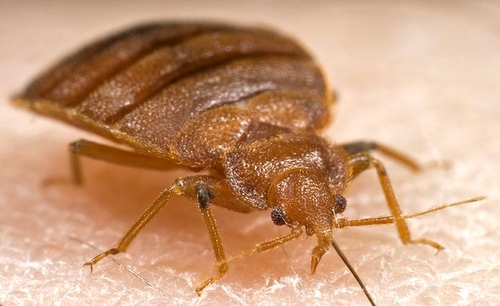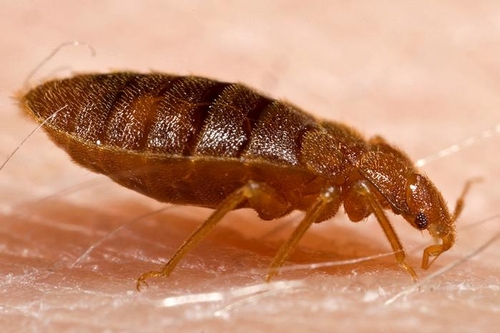"The bedbug for its part wants to get in, get the bite and get away without being detected, so it's to its advantage to not do anything to wake you up or have you scratch or slap in your sleep."
As an aside, the Bohart Museum, directed by Lynn Kimsey, professor and former interim chair of the UC Davis Department of Entomology, is no stranger to the topic of bedbugs.
The Bohart Museum at 1124 Academic Surge, California, Drive, houses more than seven million insect specimens--and you guessed it--some are bedbugs. News media and other curious folks walk in and ask to see them. (Note: the Bohart is open Mondays through Thursdays from 8:30 a.m. to noon, and from 1 to 5 p.m., and there's an open house on Saturday, Dec. 11.)
Bob Kimsey (husband of Lynn, by the way) and entomologist Jeff Smith of Univar recently penned an article for the Bohart newsletter that offers insights to the problem.
"The common bedbug,
Cimex lectularius, is not a new pest of humans, but has been a resident in human dwellings since we lived in caves," the Kimsey-Smith duo wrote. "In fact this species of bedbug may originally have fed on bats that lived in caves. When humans moved into those caves for shelter they may have become another blood resource for these insects, which moved with humans as they advanced from caves to other dwellings."
"Since bedbugs re-emerged in the U.S. less than 10 years ago, they have found their way into nearly every kind of structure, including buses, theaters, hospitals, schools, and vehicles that move furniture."
Kimsey and Smith point out that "Bedbugs feed at night and hide during the day. They seek out even the narrowest of cracks, holes, and crevices for their daytime resting places. The vast majority, perhaps 70% or more, will hide as close to their food as possible, and this is either your bed or in furniture that people may sleep on. Living room couches and recliners are commonly infested. You should purchase a good quality mattress and box spring encasement and seal these parts of the bed within it. This will remove all of these resting sites from the bedbugs, and any bedbugs already within the seams of the mattress or inside the hollow box spring will be trapped and die there. You can purchase these at bedding stores or from pest control companies."
If you travel, here are some tips from the Kimsey-Smith duo:
--when you check into a hotel, inspect the bed, mattresses and headboards for tell-tale signs of bedbugs. Look for dark specks (fecal matter), shed skins and tiny white eggs
--place your luggage on on one of those stands with metal legs and make sure it's not touching the walls
--avoid carrying bedbugs back home; place your clothing in a sealed plastic bag until it's ready to be washed or dry-cleaned
--be aware that even the airline luggage compartment can spread bedbugs if one piece of luggage is infested
If bedbugs accompany you home, you may have to hire professionals to rid your home of them. Even a small screw hole on the back of a dresser can house 20 or more bedbugs, they caution.
Bah, hum-bug!


